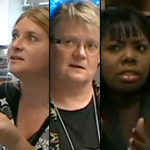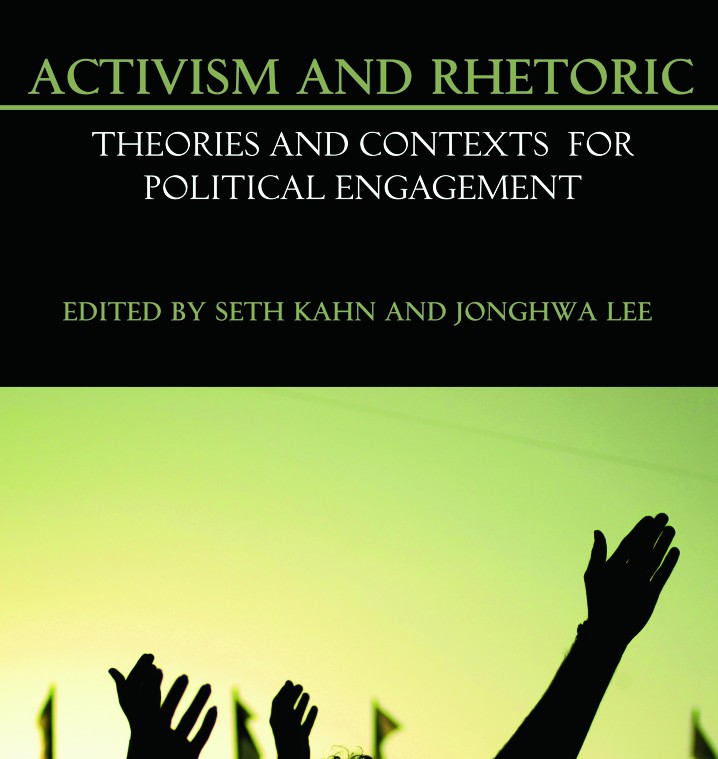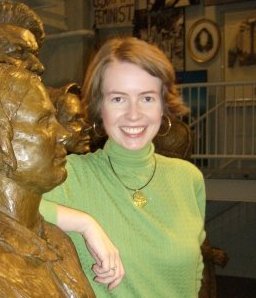Cooking Codes: Cookbook Discourses as Women’s Rhetorical Practices
Article PDF
Through informal conversations about cooking, women have participated in a practice that has allowed them throughout history to connect with other women and validate their own existence in the domestic sphere. Marion Bishop explains that through the process of writing and sharing recipes, women construct a rhetorical situation which affirms their worth not only as cooks but also as people (96). Women engage in this act daily, holding the common assumption that such a practical, mundane skill—and its textual representation—cannot be that important. Existing in the private space of the home, recipes and the discourses they reflect have often been overlooked as a cultural text. Upon closer inspection, these forms of women’s writing carry significance beyond a list of rules and measurements, hinting at the values and desires of their authors and the communities they lived in.
Much like cooking, the recipe—the written representation of women’s domestic discourse—is a dynamic text. Modifications, deletions, substitutions and experiments enable the cook to reproduce the text in her own way. Digital versions of the traditional recipe take advantage of its dynamic nature, enhancing the recipe with hyperlinks, photos, videos, and user comments. Examples of some of these include the blog Simply Recipes, written by Elise Bauer, and the website AllRecipes, where anyone can submit their own recipe to the site. Susan J. Leonardi explains that it is the nature of the recipe that encourages revision, arguing that “like a narrative, a recipe is reproducible, and, further, its hearers-readers-receivers are encouraged to reproduce it and, in reproducing it, to revise it and make it their own” (344). Therefore, the act of reading a recipe invites revision, as it calls upon past experience and influence to interpret or reinterpret it. In fact, Elizabeth J. McDougall argues that all recipes are “unauthorized” (117): that is, they do not come from any one cook but instead belong to the community of women who work together to construct them.
Cookbook scholar Janet Theophano compares the cookbook to a diary, explaining how the text describes a woman’s world, being an account of their daily lives (6). Dog-eared pages, marginal notes, newspaper and magazine clippings pasted to the inside covers, and food-stained pages can all give clues to the former owner of the book and what her life was like. Clues found in my grandmother’s first edition copy of Betty Crocker’s Picture Cook Book (1950) make it obvious how the text was used, which hints at her likes, dislikes, and prior experience. The pumpkin pie recipe, used for Thanksgiving or Christmas holidays, is nearly obliterated by stains and handwritten amendments and notes. Sections such as sauces, appetizers, and meats all are in pristine condition, which attest either to her disinterest or to her ability to memorize these recipes for daily cooking. In these ways, this cookbook attests to my grandmother’s existence as a woman, and her expertise as a cook. It reads, as Theophano previously described, like a diary: a diary of daily meals, of special meals, of birthdays, Christmases, and church potlucks. It is precisely the quotidian nature of the cookbook that makes it a significant cultural text.
This diary characteristic of cookbooks has lasted into the present day, particularly with the growing popularity of weblogs devoted to cooking. One in particular, 101 Cookbooks by cookbook author Heidi Swanson, echoes the ink annotations and margin notes found in the previous pumpkin pie recipe, albeit in a digital medium. Swanson’s posts include professional, full-color photographs of the dish, along with an extensive narrative commentary to contextualize the recipe. In these posts, readers learn about Swanson’s life, family, interests, and desires through cooking. Swanson’s intimate writing engages readers, allowing them to know her through her recipes. Indeed, her blog receives many comments, with readers expressing their own interest in the recipe and own experiences or problems with it. In this way, Swanson’s blog opens the cookbook up to dialogue, something that is unavailable in printed cookbooks. While cookbooks have their roots in an historical tradition, their rhetorical impact is found today as well, in multiple ways.
Cooking is and has historically been a gendered practice. Mary Anna DuSablon asserts that “our national cuisine was conceived, developed, penned, and conserved almost entirely by women” (61). From its origins as an apprentice-based oral culture to the preponderance of food blogs and online recipe sharing forums, the authors of and audience for cookery texts is primarily female. Even with the inclusion of male hosts on Food Network cooking shows such as Bobby Flay and Emeril Lagasse, the majority of viewers—and consumers—are women. Since this community has traditionally existed in the private sphere, it has gone mostly unnoticed, allowing women to construct for themselves a vital, life-affirming community that respects their authority and experience, something most women were unable to have in the public sphere of society for many years. Now that it has been accepted into the public sphere, on television and on the Web, cooking is one area where women are allowed full reign to compose and produce, without the previous limitations imposed on them by men and patriarchal forces.
Gendered Language and Resistance
As scholars attest, women have never had full access to the modes of communication. Cinthia Gannett, author of Gender and the Journal, explains that “Women have been more like borrowers, or even thieves, than like proprietors of language, [. . .] for men have controlled the manufacture of public semantic resources and the terms of their commerce in public discourse” (61). Additionally, Joan Radner and Susan S. Lanser explain that the public/private division separates men and women unequally, as not only are men separate from women, but they are also dominant over women as well. Therefore, any use of the dominant language by women is controlled by men. As consumers and producers of language, women interact with a text in a very different way from men due to their different experiences.
Because of these limitations on women’s literacy practices, women throughout history have learned to become resisting readers—and writers. Dissatisfied with their low status in society, women have used language in creative ways in order to have control over their reality and free themselves from oppression. Women have succeeded at this resistance through coding. Radner and Lanser discuss women’s use of codes to communicate with other women, saying that “in many, if not most, societies there is a realm of practice that is primarily or exclusively woman’s domain, through which women may develop a set of common signifying practices whose meanings are not necessarily accessible to men of the same group” (2). This practice constructs what Radner and Lanser call a “women’s culture,” an exclusive discourse community that engages in coding. Radner and Lanser define coding as “the expression or transmission of messages potentially accessible to a (bicultural) community under the very eyes of a dominant community for whom these same messages are either inaccessible or inadmissible” (3). When the women’s language is coded, they are free to communicate with each other without fearing consequences from those outside the community1. However, this exclusivity is a barrier that contemporary cooking media has tried to break down. In her television show The French Chef, Julia Child attempted to make French cooking accessible to a wider audience, an audience without professional training. The goal of most how-to cooking shows, such as today’s Rachael Ray or Paula Deen, is to make cooking understandable for a lay audience, to get women (and men) into the kitchen. While past tradition may have been strengthened by keeping the community secret and exclusive, contemporary media have opened up cooking as an activity for anyone.
Often, women have formed relationships with other women via literate practices. Anne Ruggles Gere writes of 19th century women’s club members who, having a subordinate political position, aided their creative resistance through literate practices in the form of speeches, pamphlets, banners, and letters (13). These clubwomen saw literacy as a way to change public perceptions about their class, gender, race, and religion, via their accepted literate practices (26). This resistance—in the guise of an approved literate practice—is what Radner and Lanser name “appropriation,” a coding practice that allows the woman to “transgress from within.” It involves adapting forms associated with men’s culture or with stereotypic female images for subversive, feminist purposes (10). Feminist scholar Susan Lanser explains that “precisely because it is safe, indeed immensely serviceable as competencies go, domestic performance so validates a woman that it can mark or justify her appropriation of male turf [. . .] surely a woman who keeps cooking and cleaning so dutifully cannot be a threat” (39-40). Appropriation is a powerfully effective method, as it is a form of subversion in plain view. As long as the woman fulfills her gender role, little attention is paid to the increasing amount of power she gains in both the private and public spheres.
Multimodality and Women’s Literacy Practices
Throughout history, women’s literacy practices have been ones of adaptation and remediation. Women’s texts are often flexible, utilizing a wide variety of modes as appropriate to the context. Because women’s literacy was devalued, women had to develop a new, useful literacy that would permit their communication practices to continue while fulfilling the duties of their gender role. This type of literacy needed to be adaptable, with the ability to create and sustain strong networks of women. Thus, because of gender constraints, women developed literacy practices that relied on a variety of modes, creating flexible, open texts which are dialectic in nature and work to maintain bonds with others in the community.
To return again to the 101 Cookbooks example, Swanson’s blog exhibits these characteristics of a flexible, open text in digital form. The comment feature on each post encourages reader interaction with the text, allowing people to engage with Swanson’s recipe and share their own tips and recommendations. Swanson herself keeps up with the discussion, adding her own responses and comments. While this comment feature is of course a common aspect of Web 2.0 tools, cooking sites like 101 Cookbooks, along with other examples such as Clotilde Dusoulier’s bilingual Chocolate and Zucchini, the theme-focused Cupcakes Take the Cake, and the user-submitted recipes on Chow, have all been able to develop the tool for their purposes, as literacy practices related to cooking are inherently flexible and open.
Women’s literacy practices can best be described as multimodal. Jacqueline Jones Royster discusses these multimodal aspects of women’s texts in her study of African-American women’s literate practices, Traces of a Stream. Writing specifically about the author Alice Walker, Royster explains how she engages in “writing across genres” (20). This multi-genre writing, Royster argues, shows Walker’s desire to not let her voice be defined by any single form of expression (20).2 Multimodality is women’s alternative.
A multimodal text is best defined as one which uses any variety of communicative means to express itself (Kress). Specific to women’s literate practices is the wide variety of styles used and genres adapted to construct a similar text, as in the example of African-American women writers. The way to read a multimodal text is different, as well. Unlike a traditional printed book, where there is a single specific way to read it (left to right, top to bottom, turn the page and begin again), a multimodal text has more flexibility in the way it can be read. There are many points of entry in this type of text (Kress 136), in the same way that cookbooks are not meant to be read from cover to cover, but instead encourage the user to begin from any page and flip between pages and sections as needed. While print cookbooks exhibit this multimodal characteristic, contemporary versions on cooking blogs or websites demonstrate this feature to a greater extent, allowing an open navigation pattern for reading and interacting with the site.
Cookbooks as Multimodal Texts
Cooking, a literate and embodied practice central to women’s lives, is multimodal. The practice parallels many forms of women’s writing, as it is a flexible form relying on a variety of modes. It relies on linguistic, visual, typographic, and embodied or experiential modes of literacy in order to understand the text. The visual and typographic structure of a recipe gives a clue as to how to read it, to scan for information and recursively switch back and forth between the list of ingredients and paragraph of instructions. For example, in the cooking blog The Pioneer Woman Cooks! by Ree Drummond, photographs are used extensively within the recipe to illustrate each step. Photos illustrate the actions to be taken and the proper appearance of the dish, while the narrative instructions serve as captions to the photographs. Comments are also frequent on this blog, as readers write in with their questions, comments, and own versions of the recipe. While recipes have always been multimodal, the cooking blog has been able to take advantage of these flexible, dialectic characteristics and adapt the recipe for the digital age.
Since cooking is a gendered practice, taking place within the domestic sphere and originally set aside as “women’s work,” the preparation of food has always been marked by gender. In fact, I argue that this practice consists of a set of elements: social practices, textual practices, and embodied practices are all involved in constructing gender, enforcing its existence as an exclusive community of women. Each of these elements in the construction of gender also contributes to its multimodality, which provides hints on how to interpret the discourse and “crack” the code, thus leading to a fuller understanding of the cultural and rhetorical significance of the text that is in everyone’s kitchen, and on everyone’s computer: the cookbook.
Endnotes
- Similarly, Michel de Certeau and Luce Giard describe the language of cookery as a coded practice, saying that “these people have their own language and corpus of reference, as well as their own secrets and complicities—an implicit, well-known knowledge that the most detailed of recipes will not communicate to you” (215). Cooking is itself an exclusive group, containing codes that—unless one is a member of the discourse community—cannot be understood by the general public. return
- Royster notes that “in terms of style, Walker does not always remain within conventional boundaries of exposition and argument. She weaves in and out of these modes—at will, as a master storyteller might well do—and operates as if there were indeed a fluid space in which both autonomous and non-autonomous rhetorical choices can be selected” (40). Because Walker and other women writers are able to work within this “fluid space,” they are not limited by the clear boundaries set by men’s genres and in effect ignore convention. As women have been alienated, oppressed, and ignored by the dominant discourse, it is not surprising that women find it easy to ignore convention, as the convention marks a style they never had access to. return
Works Cited
- Allrecipes.com. Allrecipes, 2010. Web. 16 June 2010.
- Bauer, Elise. Simply Recipes. Simply Recipes, 14 June 2010. Web. 16 June 2010.
- Betty Crocker’s Picture Cook Book. 1st edition. New York: McGraw-Hill, 1950. Print.
- Bishop, Marion. “Speaking Sisters: Relief Society Cookbooks and Mormon Culture.” Bower 89-104. Print.
- Bower, Anne L., ed. Recipes for Reading: Community Cookbooks, Stories, Histories. Amherst: U of Massachusetts P, 1997. Print.
- Bussell, Rachel Kramer, et. al. Cupcakes Take the Cake. Cupcakes Take the Cake, n.d. Web. 16 June 2010.
- Certeau, Michel de, Luce Giard, and Pierre Mayol. The Practice of Everyday Life, Volume 2: Living and Cooking. Trans. Timothy J. Tomasik. Minneapolis: U of Minnesota P, 1998. Print.
- Chow.com. CBS Interactive, 2010. Web. 16 June 2010.
- Dusoulier, Clotilde. Chocolate and Zucchini. N.p., 15 June 2010. Web. 16 June 2010.
- Drummond, Ree. “The Pioneer Woman Cooks!” The Pioneer Woman. The Pioneer Woman, 25 Apr. 2010. Web. 27 Apr. 2010.
- DuSablon, Mary Anna. America’s Collectible Cookbooks: The History, the Politics, the Recipes. Athens, OH: Ohio UP, 1994. Print.
- Gannett, Cinthia. Gender and the Journal: Diaries and Academic Discourse. Albany: SUNY P, 1992. Print.
- Gere, Anne Ruggles. Intimate Practices: Literacy and Cultural Work in U.S. Women’s Clubs, 1880-1920. Chicago: U of Illinois P, 1997. Print.
- Kress, Gunther. Literacy in the New Media Age. New York: Routledge, 2003. Print.
- Lanser, Susan S. “Burning Dinners: Feminist Subversions of Domesticity.” Feminist Messages: Coding in Women’s Folk Culture. Ed. Joan Newlon Radner. Chicago: U of Illinois P, 1993. 36-53. Print.
- Leonardi, Susan J. “Recipes for Reading: Summer Pasta, Lobster à la Riseholme, and Key Lime Pie.” PMLA 104.3 (1989): 340-347. Print.
- McDougall, Elizabeth J. “Voices, Stories, and Recipes in Selected Canadian Community Cookbooks.” Bower 105-117. Print.
- Radner, Joan Newlon, and Susan S. Lanser. “Strategies of Coding in Women’s Cultures.” Feminist Messages: Coding in Women’s Folk Culture. Ed. Joan Newlon Radner. Chicago: U of Illinois P, 1993. 1-30. Print.
- Royster, Jacqueline Jones. Traces of a Stream: Literacy and Social Change Among African American Women. Pittsburgh: U of Pittsburgh P, 2000. Print.
- Swanson, Heidi. 101 Cookbooks. N.p., 24 Apr. 2010. Web. 27 Apr. 2010.
- Theophano, Janet. Eat My Words: Reading Women’s Lives through the Cookbooks they Wrote. New York: Palgrave Macmillan, 2002. Print.




 Elizabeth Fleitz is currently an Assistant Professor of English at Southeast Missouri State University. She received her PhD in English, concentration in Rhetoric and Writing, at Bowling Green State University, where she wrote her dissertation on cookbooks as a women’s literacy practice. A version of this article was presented at the 2009 Feminism(s) and Rhetoric(s) Conference.
Elizabeth Fleitz is currently an Assistant Professor of English at Southeast Missouri State University. She received her PhD in English, concentration in Rhetoric and Writing, at Bowling Green State University, where she wrote her dissertation on cookbooks as a women’s literacy practice. A version of this article was presented at the 2009 Feminism(s) and Rhetoric(s) Conference.